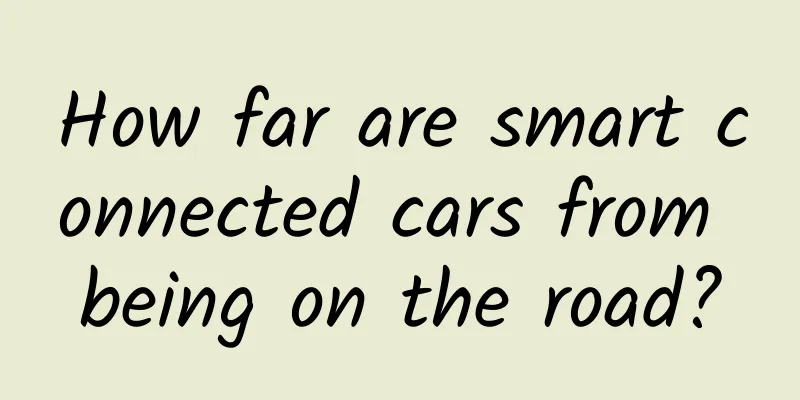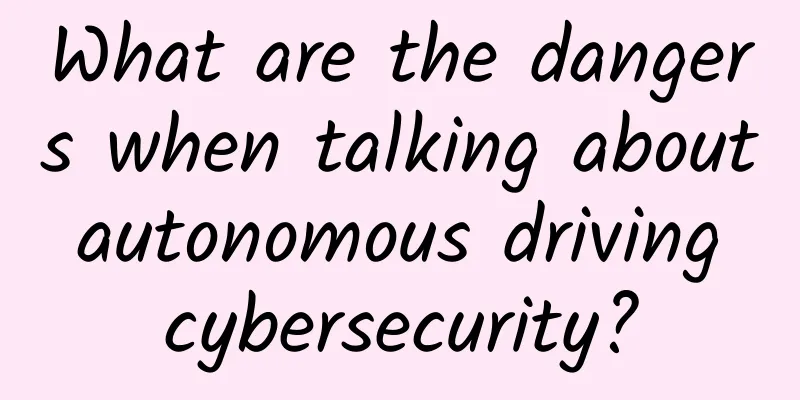How far are smart connected cars from being on the road?

|
At present, intelligent networked vehicles have been actually used in the industrial field, but there is still a "last mile" to go before manned vehicles can achieve unmanned driving. This has become a hot topic in the field of vehicle engineering and a new driving force for the growth of the automotive industry. The technical path is how to make the vehicle network the "nervous system" of the vehicle, thereby realizing the functions of information collection, transmission, calculation, feedback, and control, so as to ensure that drivers can drive easily, safely, and understand maintenance. Recently, the Anhui Internet of Vehicles Technology Research Center, jointly built by the In-Vehicle Information Service Industry Application Alliance and the Intelligent Manufacturing Technology Research Institute of Hefei University of Technology, was officially established in Hefei. The center will focus on key technologies in the field of intelligent connected vehicles, such as millimeter-wave radar, vehicle-to-vehicle communications and network security, and will carry out collaborative innovation actions with relevant research institutes and automobile and parts manufacturers. Millimeter-wave radar: "Brightening" the eyes of smart cars It is reported that according to my country's energy-saving and new energy vehicle development technology roadmap, by 2030, 10% of the cars on the market will achieve fully autonomous driving. To achieve unmanned driving, the ability to recognize the road environment must be possessed first. "Millimeter-wave radar, laser radar and visual sensors can be called the eyes of intelligent connected cars," said Professor Kong Huifang, director of the Institute of Automotive Electronics and Measurement and Control Technology at Hefei University of Technology. Through these eyes, vehicles can accurately observe the position and direction of movement of pedestrians, obstacles or other vehicles, and effectively obtain road information, thereby ensuring smooth and safe driving of vehicles. Millimeter-wave radar is the best choice for the visible eyes of intelligent cars because its signal is not easily attenuated and is less affected by environmental interference such as rain, snow and dust. At present, the application of automotive millimeter-wave radar in my country is still in the testing stage. The research and development and testing of related technologies and products require the coordinated efforts of automobile manufacturers, radar manufacturers, and radio monitoring centers. The road image information collected by the "eyes" will be analyzed through comprehensive image processing, machine vision, machine learning and other advanced technologies to detect and extract the environmental information on the actual road, and realize intelligent recognition of the current road environment. These road information and the control signals and status information between the vehicle's electrical appliances will be transmitted instantly on the vehicle's internal network through bus technology, thereby realizing the control of vehicle operation and the status monitoring of on-board electrical appliances. Car-to-car communication: Developing the "clairvoyance" of smart cars Keeping eyes open enables vehicles to observe road conditions autonomously, but this alone cannot realize vehicle intelligence. "Only by relying on wireless communication and the Internet of Vehicles technology, an interactive network between vehicles and between vehicles and road test facilities can the intelligent car's clairvoyance be trained." Kong Huifang said that the so-called Internet of Vehicles is an integrated network of vehicles, roads and people and its applications. At present, the application of Internet of Vehicles technology in automobiles has become quite common, which has greatly improved people's driving experience. However, the current application of Internet of Vehicles technology is mainly for primary functions such as positioning navigation, entertainment information, and vehicle anti-theft. The clairvoyance of smart cars is based on the Internet of Vehicles technology, which forms information interaction between cars, cars and roads, cars and people, cars and facilities, and interacts and shares various types of information such as vehicle location, speed and route. The huge interactive network it forms can help vehicles perceive the driving environment even in rain, snow and foggy weather, and realize temporary obstacle warning, vehicle distance warning and control and other danger identification responses. It is worth mentioning that since vehicles can share road condition information, when the current vehicle has an accident, it can immediately prompt the following vehicles to prepare to slow down in advance or avoid the accident section. At the same time, vehicle-to-vehicle communication also makes intelligent transportation and green transportation a reality. "The currently widely used intelligent navigation can provide the shortest route or the shortest time, but these options often do not mean the lowest energy consumption." Kong Huifang introduced that by connecting to road facilities such as traffic lights and analyzing data information provided by other vehicles and road facilities, the most reasonable route and speed can be provided for traveling vehicles. In addition, in addition to avoiding congested sections or sections with poor road conditions, drivers can also know in advance what steady speed they need to control in order to pass the next traffic light smoothly, thereby avoiding sudden starts and brakes, reducing fuel consumption while ensuring efficient and safe traffic. Cybersecurity: Add a "safety lock" to smart cars With the development trend of intelligent automobiles and transportation and smart cities, more vehicle information is gradually opened and uploaded to the on-board information terminal through high-speed buses, making the on-board information terminal the brain of the vehicle and the on-board network the nervous system of the vehicle, thereby realizing the functions of information collection, transmission, calculation, feedback and control. By uploading information data to the cloud through the car cloud network, the vehicle can not only realize automatic driving, but all its data information can be used in all aspects from production to after-sales. "Everyone knows that vehicles need maintenance every 5,000 kilometers, but 5,000 kilometers is just an estimate. Different road conditions and different driving habits will have different impacts." Kong Huifang introduced that intelligent networked vehicles can accurately judge the specific condition of the vehicle by collecting various data during the vehicle's driving process, and remind the vehicle to perform maintenance in time, thereby effectively ensuring the good condition of the vehicle. At the same time, this data can also accurately reflect the driver's driving habits. If it is found that the driver has dangerous driving habits, even if he has luckily avoided accidents and violations, he can still be punished by charging high insurance. Smart cars can not only remotely monitor vehicle status, but also remotely control vehicles, which also puts higher requirements on the security of the Internet of Vehicles. "If a vehicle is remotely controlled by humans while driving at high speed, it will cause great insecurity," said Kong Huifang. To this end, the center will also carry out key technology research and development for the network security of the Internet of Vehicles, adding a safety lock to the development and use of smart cars. As a winner of Toutiao's Qingyun Plan and Baijiahao's Bai+ Plan, the 2019 Baidu Digital Author of the Year, the Baijiahao's Most Popular Author in the Technology Field, the 2019 Sogou Technology and Culture Author, and the 2021 Baijiahao Quarterly Influential Creator, he has won many awards, including the 2013 Sohu Best Industry Media Person, the 2015 China New Media Entrepreneurship Competition Beijing Third Place, the 2015 Guangmang Experience Award, the 2015 China New Media Entrepreneurship Competition Finals Third Place, and the 2018 Baidu Dynamic Annual Powerful Celebrity. |
>>: Why is Silicon Valley the only one that can combat fake news?
Recommend
5 Laws of Strategy | Use the first one and you can ignore the other four
Before formulating a communication strategy, mark...
A male star had a fish bone stuck in his esophagus, so he immediately drank vinegar or ate steamed buns? Both wrong! Here’s the answer…
Expert in this article: Dr. Tian Jing, attending ...
Is Pinduoduo's user growth stagnating?
Pinduoduo (PDD) became a hot topic due to the “pr...
Overall trends in the tourism industry and advertising optimization strategies
When promoting the tourism industry, we often see...
Why not choose one year of training instead of four years of university?
[[142050]] I am a college student. I am currently...
Samsung's official refurbished Galaxy Note7R confirmed! Still priced at 5,000 yuan
Samsung has confirmed that it will sell refurbish...
Le Xiaobao Story Optical Machine Disassembly Review
As the first parent-child smart toy product launc...
What is the viral user growth model? How to build a user growth model?
The concept of growth hacking is very popular now...
APP ranking investigation: How to break out of the unspoken rules
Not long ago, the WeChat public account inflated ...
Revealing the secrets of Tik Tok’s genes and the authenticity of Tik Tok influencers’ traffic!
There are cracks in everything, that's where ...
How much does a 400 call cost and what does it include?
When many companies apply for 400 telephone numbe...
B Station brand marketing strategy!
Is Bilibili still communicating with Generation Z...
The soldier wiped his butt with its leaves and committed suicide due to the pain
Makes people and animals go crazy with pain The l...
iOS 9 will allow developers to create Safari ad blocking software
[[136409]] On June 11, digital publishers and onl...









